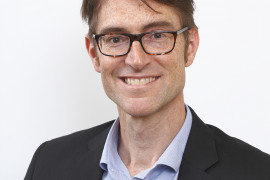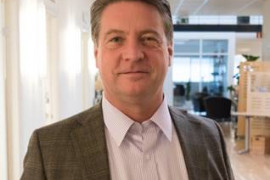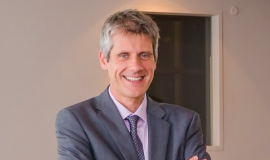 We were recently at DHC Days, the international DHC event in Lyon, France. We had the pleasure to meet with Romain Lambert, Algorithm developer at PassivSystems, a small cleantech company, and he agreed to let us pick his brains.
We were recently at DHC Days, the international DHC event in Lyon, France. We had the pleasure to meet with Romain Lambert, Algorithm developer at PassivSystems, a small cleantech company, and he agreed to let us pick his brains.
You’ll find the whole interview below. We’d like to thank Romain and the team at PassivSystems for their kindness and dedication.
Have a good read!
Romain Lambert, Passivsystems
Can you introduce yourself and PassivSystems to our readers? Who are your clients? What is your role?
We are a small cleantech company located in Newbury, a small market town in Berkshire in the south of England, approximately 1 hour west of London.
PassivSystems has developed a smart energy platform which can operate as a ‘digital canopy’ for heat networks by supplying a range of digital services such as automatic meter reading (AMR), in-home smart controls, cloud based payment systems, return temperature optimisation, and demand side management (e.g. load profiling).
As for me, I am an algorithm developer and I translate customer needs into algorithms which are then put in operation on our platform.
What do you find most interesting about the DHC industry?
I’d say it’s the variety of systems one can come across in Europe, not just technology-wise but also in terms of governance.
Every country has its own endemic form of district heating, influenced by local legislations and entrepreneurial ecosystems.
I initially acquired most of my knowledge on district heating from Sweden (I am grateful to have met and collaborated with amazing people in this country), but there is a great contrast with the systems we have here in the UK.
You presented on the digitalization of the industry during the event. Can you tell us more about it?
Digitalization is disrupting many industries.
Two eminent examples are Airbnb and Uber who created major changes in the accommodation and taxi transportation industries without owning physical assets but by acting as digital ‘network orchestrators’ (an expression coined by Barry Libert).
Despite their position of natural monopolies, district heating might undergo similar deep transformations in the not so distant future and become more open, probably working on a prosumer model, but likely encompassing a broader range of services.
Another major trend in the district heating industry is the deviation from the ‘one-size-fits-all” model of merely selling kWh to create new value propositions that cater to a fragmented and increasingly diverse customer base.
Business model innovation is key and digitalisation will play a major role in underpinning this evolution.
We know that big data is everywhere and that every sector is being influenced by digitalization, especially in the energy industry. How do you see this evolving in the coming years?
Big data, machine learning, and the internet of things will definitely contribute to the creation of smart heat grids, but operational optimisation is only one aspect.
An important contribution of predictive analytics will be to help create a smarter segmentation of consumers. This technology will be useful to determine which consumers should be targeted for certain services, consumer engagement initiatives and reward programs.
This will allow district heating companies to become more in tune with their customers and end-users’ needs.
However, utilities might face competition from big technology companies that are already well positioned to be able to supply digital consumer engagement services.
That’s why they have to be very proactive in this area too. Hopefully they can learn by working with cleantech SMEs like PassivSystems.
France has highlighted district heating as a big opportunity for the energy transition: what role can the British experience play in the development of DHC in France?
Although the market share of district heating in France is below that of Nordic countries, the French DHC industry has reached a certain level of expertise and maturity which is prompting network operators to extend their reach on the end-user side of the substation.
In the UK, most new commercial residential developments have been designed with individual heat interface units in each dwelling, in part for cultural reasons.
The British experience can certainly provide some useful know-how in terms of individualisation of metering and control as well as predictive analytics on the secondary side of the substation.
How does the French market look from abroad? Would you say it is full of opportunities?
The French market looks very dynamic and we are keen to expand our operations there.
France has a very systematic way of developing district heating, mainly dominated by the triumvirate Dalkia, Engie, and Veolia.
Besides these three key players, the rest of the industry also looks well organised.
The industry association AMORCE acts as a very active think tank and there is also great political support from the French Energy and Environment Agency (ADEME).
During DHC days I was very impressed with some R&D initiatives from the ‘Fonds Chaleur’ focused on smart heat grids.
It seems like there is fertile ground for experimentation and pilot projects on emerging 4GDH technology.
In terms of digital technology, France is also a leader in the field of IoT technologies. At PassivSystems we use the French technology SigFox for our automatic meter reading solutions.
You’ve sponsored DHC Days. How else do you reach out to the DHC community?
DHC days was a great conference.
We try to attend other events such as Euro Heat and Power Congress and the 4DH conference organised by Aalborg University in Denmark.
In the UK, we have our own industry associations, for example the association for decentralised energy (ADE) and the UK district energy association (UKDEA).
We are also supporters of CELSIUS, a European DHC technology demonstration project which has been a great knowledge exchange platform for European cities.
I encourage readers to register to their webinars, you will learn a lot. Last but not least, we also try to align our R&D roadmap with social objectives, for example by participating in research projects in collaboration with local authorities, to tackle issues such as fuel poverty in social housing.





